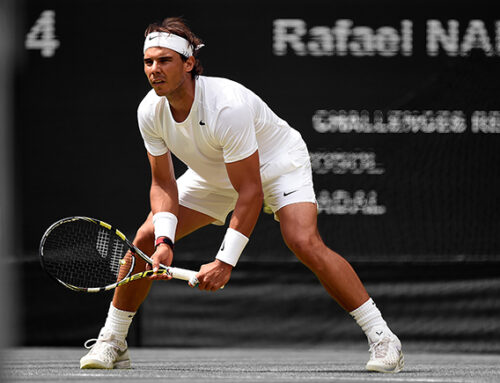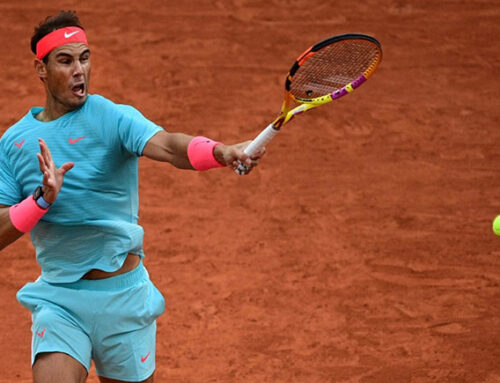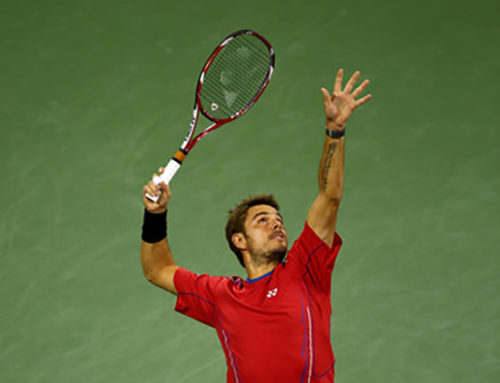When Maria Sharapova burst onto the international tennis scene by winning Wimbledon in 2004, her serve was often cited by commentators and tennis fans as one of her biggest weapons. Considering she backed that Wimbledon victory up with a 2006 US Open title and another slam championship in Australia to start 2008, it may be surprising to some to hear that Maria’s serve was always less than ideal. Since 2004 we have seen her serve change and evolve regularly, the most notable moment of which was marked by a shoulder surgery and time away from the game in 2008.
Maria’s serve is in some sense ‘troubled’ — despite her illustrious professional record and hard-earned position in the pantheon of classic champions, Maria has been frustrated by shoulder pain for a decade now. Regardless of what caused her shoulder pain, that pain necessarily influences her service motion in one way or another.
Many of the changes we have seen since those early years have been sincere attempts to address some of her underlying issues. Let’s probe some of the key changes Maria has made to her service motion, and talk about the ways in which her motion is still a fair way from reaching its tremendous potential.
The Leg Drive
In Maria’s serve, the first place we look is this intriguing foot position from early in her career.
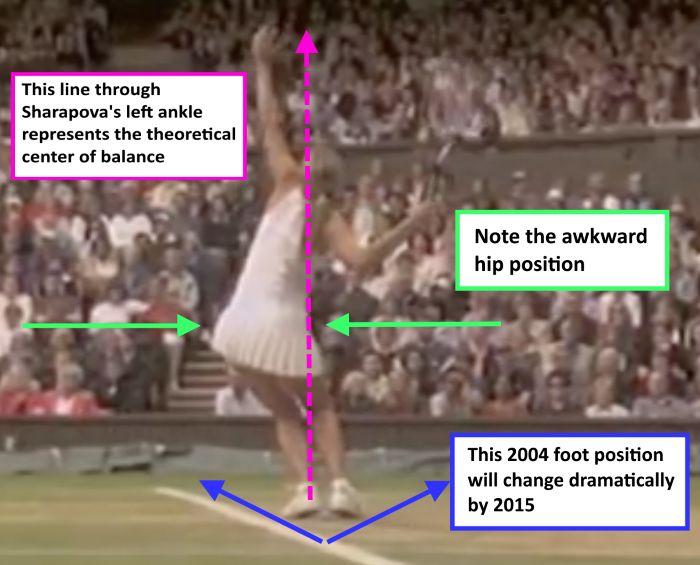
Before she changed to the more abbreviated version she currently uses, Maria began the motion with her feet separated. During the serve she would bring her feet together, until her heels almost touched. Additionally, her rear foot stepped outside her front foot. This is important because that position constrained the hips into a mechanically challenged position.
For now, the result of these two actions is that the left leg powers the jumping. It is helpful to think of her leg muscles as separate motors. The left leg is the motor that moves her to jump. Her right leg acts to elevate the right hip. Simultaneously, she has a torso shift that also assists the elevation of the right hip. This has the ultimate effect of raising her right shoulder. Note, the two motors aren’t exactly working in harmony.
The right leg of Maria is NOT used to rotate the hip, or assist in a kinetic chain movement that efficiently increases the velocity of the arm-swing at the shoulder.
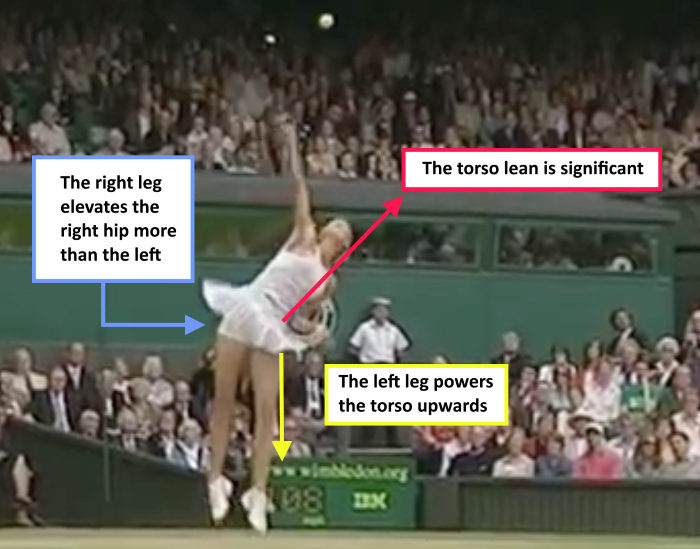
From the image we can see what results immediately pre-contact. These movements put Maria’s body into a position where she has jumped, and is leaning over to one side. Her right hip is elevated above her left hip. She is about four inches off the ground. Hold that visual image in the back of your mind. It’s an important part of understanding the service motion as a whole.
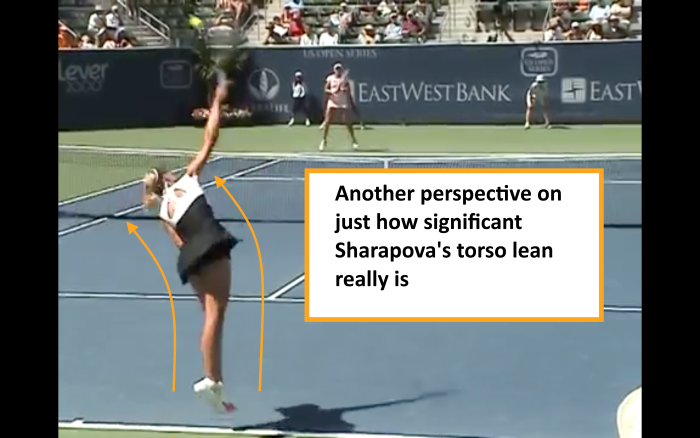
Fast forward to 2015 or so. What has Maria really changed? She’s dramatically improved the feet, which has improved her balance. But she still has the same basic coordination approach with the legs. Her hips are more on top of her ankles than they were before. In a sense it’s really improved, but in a sense it’s basically the same approach.
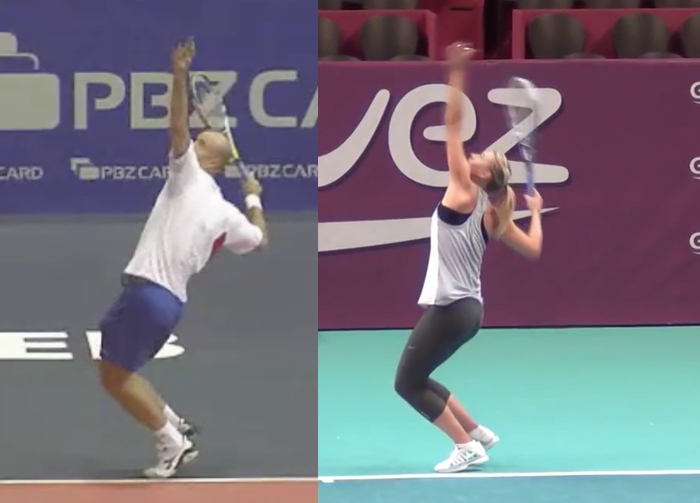
Now, in 2016, Maria’s trophy position is fairly good as seen here next to Ivan Ljubicic (whose trophy position was excellent). Let’s keep in mind how much relatively tiny differences can make when we are talking about the best athletes in the world. The trophy position is a fleeting moment for most servers – as it should be. Yet, it’s a moment of transition, the prelude to a great acceleration – the finale of which is cracking contact of a superior serve. What can we see here at first glance?
Her elbow is held near 90 degrees, and her shoulder is just shy of that, coming in slightly acute below 90 degrees. These are close to ideal, and should allow her shoulder to achieve maximum external rotation throughout the service motion. This position correlates well with overall serve velocity.
Maria’s balance is good. We can see this better in film, yet the still pictures suggest the same. Her posture is upright – overall we’d say it’s fundamentally solid. She’s not leaning too far in any direction. Maria holds her torso mostly over her ankles.
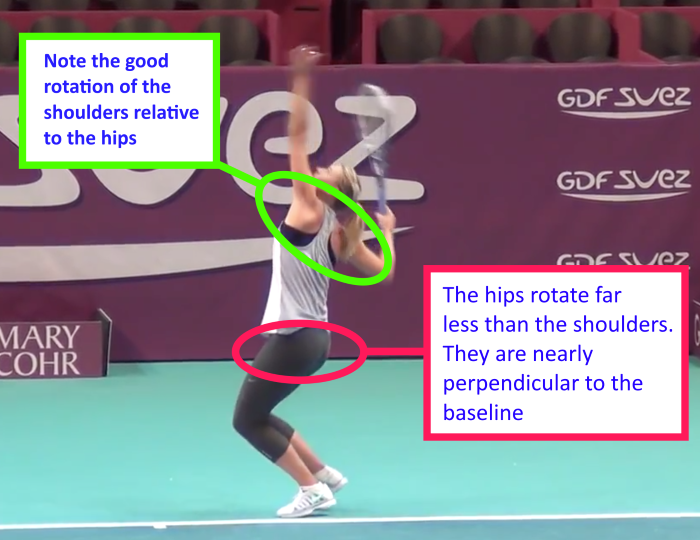
Maria’s knee bend is appropriate. She seems well positioned to produce leg drive. Coaches and analysts could nit-pick over imperfections in Maria’s trophy position. However, it’s not worth it. Here’s what’s clear:
From this position, Maria, standing about six foot three inches, with strong legs and a healthy shoulder, has the potential to serve as well as any other woman in Tour history. It’s also clear, that despite all her success, she is not the best server, male or female.
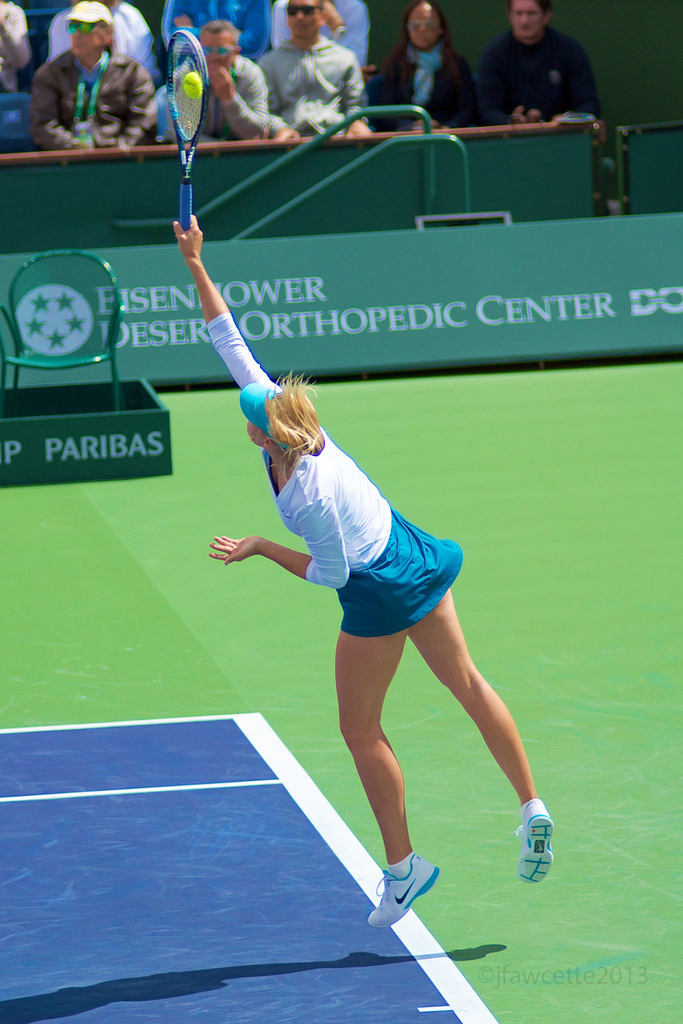
There’s a point in space during every serve where a pro actually makes contact with the ball. This is the contact point. Think back to that frame of Maria four inches off the ground. The effect of this elevation is to allow a higher contact point. In Maria’s case, she leans forward into the court, which also lowers her contact point. Note that those two things work ‘against’ each other. So the combined effect of those two movements is to allow her to hit from a contact point that is closer to the net and slightly lower than it would be otherwise. This isn’t the best possible combination for an elite server.
Maria’s forward trunk lean is still apparent in 2016. Beyond a certain threshold, the further the shoulders extend into the court, the more limitation a player will have on intrinsic shoulder rotation. More precisely, the shoulder becomes more unstable.
It is certainly fair to say that a player would benefit more from putting that energy into accelerating the arm-swing than from moving a few inches closer to the net through trunk lean. Every time you see that frame where Maria leans her trunk noticeably forward, remind yourself that she is sacrificing arm speed in order to achieve this position. So while she’s definitely closer to the net. She is also most definitely serving more slowly than her potential.
Wrapping Up
These days, people talk about Maria’s serve less often than in the past. Perhaps that’s because in its current form, her serve is neither particularly good nor particularly bad. There’s much less that’s obviously wrong with it. Serves are the only stroke in tennis we fully control, yet they are sophisticated whole body movements. There are myriad coordinations that can go wrong. While she was younger, a suspect second serve encouraged commentary on Sharapova’s motion and mental approach. She’s worked so hard on this now that the motion looks fairly clean. She is so committed to her serve that her second serve numbers have improved dramatically. Yet, few coaches who understand the big picture of serving would ever rave about her technique. Why is this exactly?
We established that Maria is serving more slowly than she could be. What’s that really entail though? It’s not that she’s giving up 3-4mph on her first serve. That might actually not matter very much — certainly not as much as location. But when you serve more slowly in this manner, you are also giving up significant spin potential. It’s in bold because it’s a lot. This loss of spin makes her serve far less effective than it could be. This may be the key to understanding her first serve, second serve, and service tactics. Next time we will look at the effects of spin potential on the serve, and on what Maria could be doing more successfully to truly move her into the upper echelons of servers in the game today.
